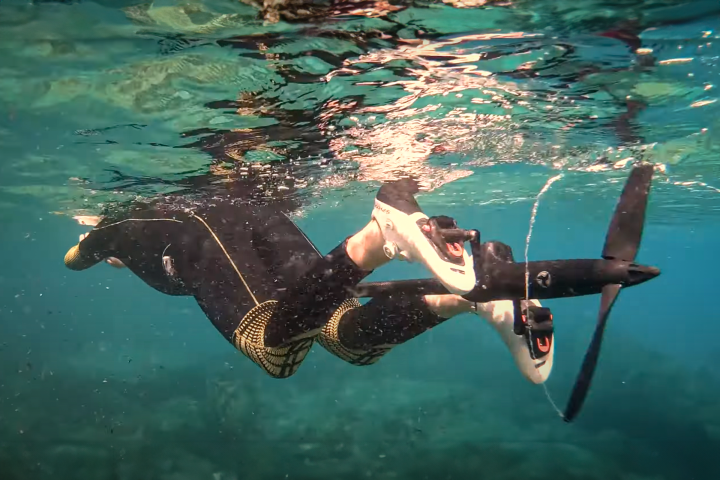Last year, US entrepreneur Judah Schiller crossed San Francisco Bay on a bike – and no, he didn’t ride that bike across the Golden Gate Bridge. Instead, he mounted it on a Shuttle Bike kit, which adds pontoons and a propeller to a user-supplied bicycle. Since then, Judah has been working on designing an all-in-one "waterbike" of his own. The result, the Schiller X1, was officially unveiled this month.
Unlike the Shuttle Bike kit (which is designed to be carried in a backpack while the rider is cycling on land), the X1 has the "bike" built into it – it doesn’t require the addition of an existing bicycle. That said, it still does disassemble for transport in a car, or for storage in a closet.
Its frame is made from anodized aluminum, with much of its hardware being constructed from stainless steel. The saddle, handlebars, cranks and pedals are of the type found on regular bikes, while the inflatable dual-chamber pontoons, not surprisingly, are rubber. It also features LED lighting.

Power is transferred from the pedals via a Gates Carbon belt drive to a continuously-variable NuVinci 360 transmission, and then used to turn two propellers mounted on flexible shafts. In an arrangement that's unique to the X1, steering is achieved not through a rudder, but by turning the two props to the left or right.
The whole thing weighs about 45 pounds (20 kg), and can reportedly travel at up to 10 mph (16 km/h) "depending on rider ability."
And no, the X1 is not cheap. The basic version will set you back US$6,495, while the limited-edition chrome-plated Founder’s Edition goes for $8,775. Shipping of the first units is expected to begin next month.
Should you not be feeling quite so rich, you might instead want to check out the similar Hydrobike, which is priced at $1,999.
Source: Schiller









